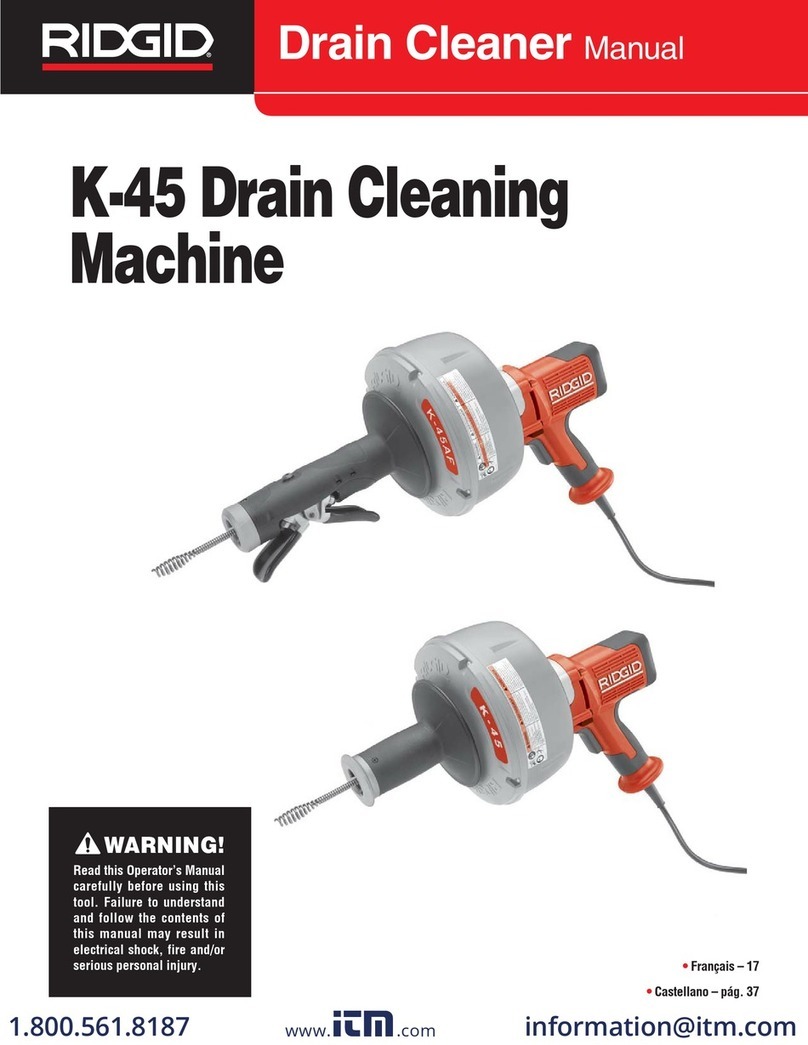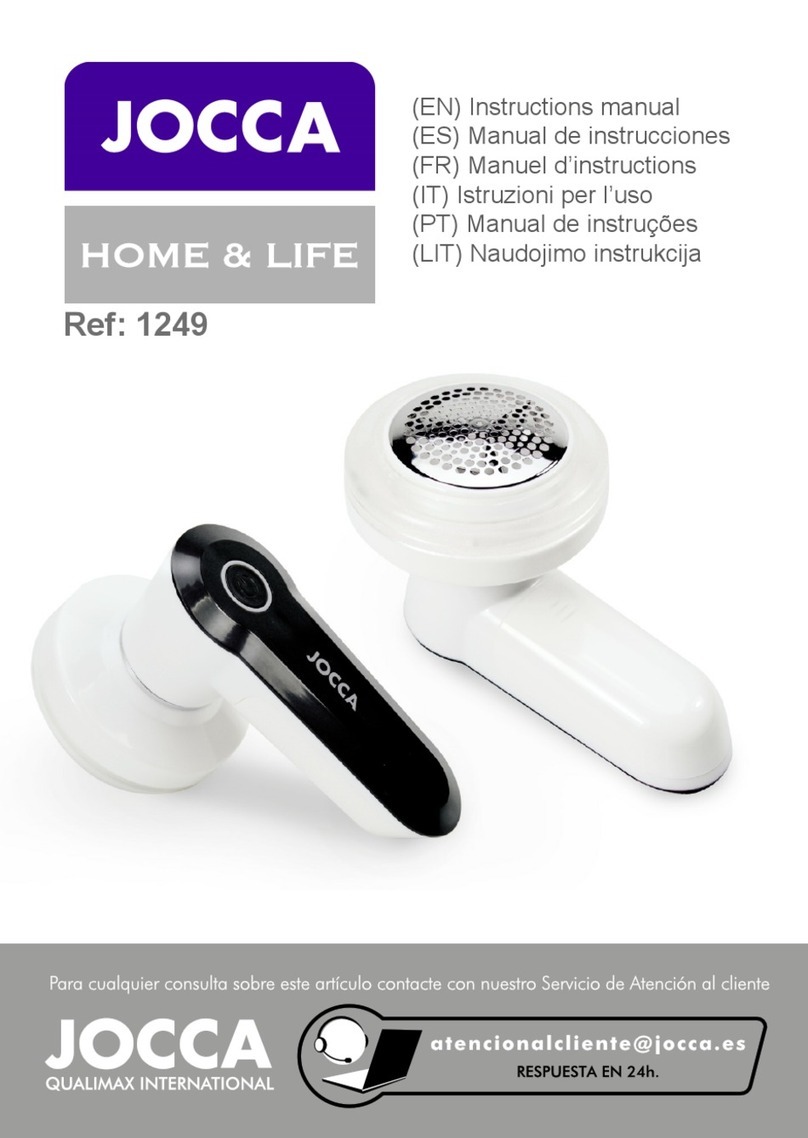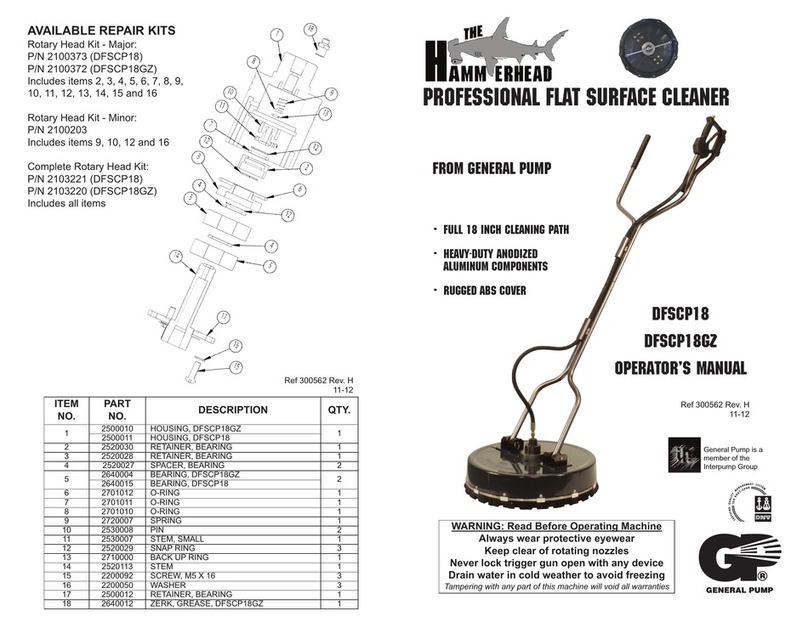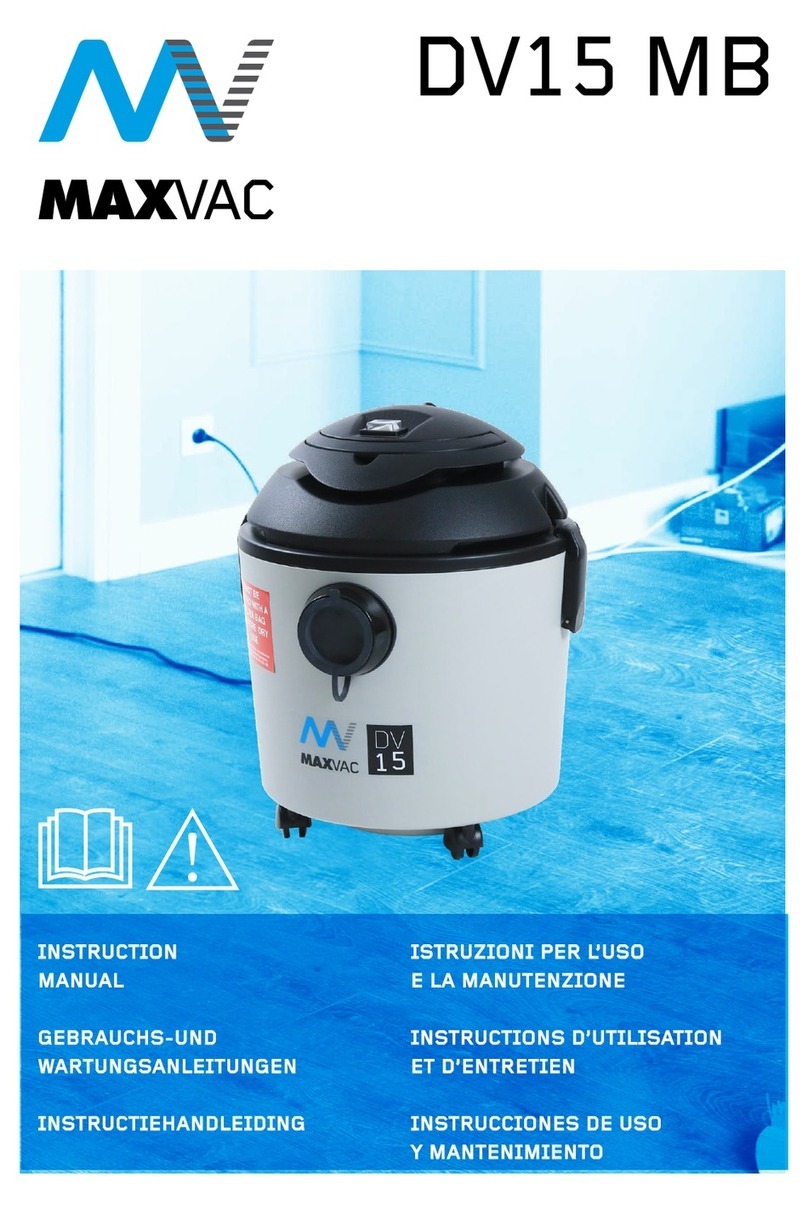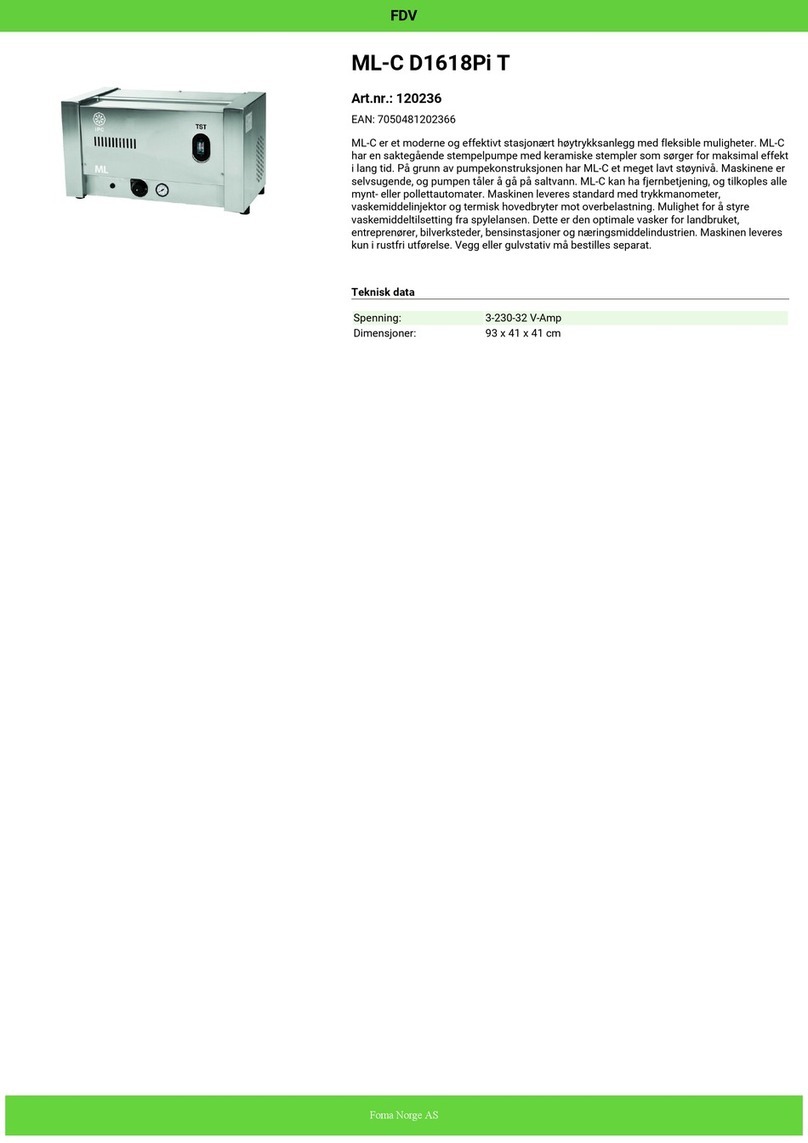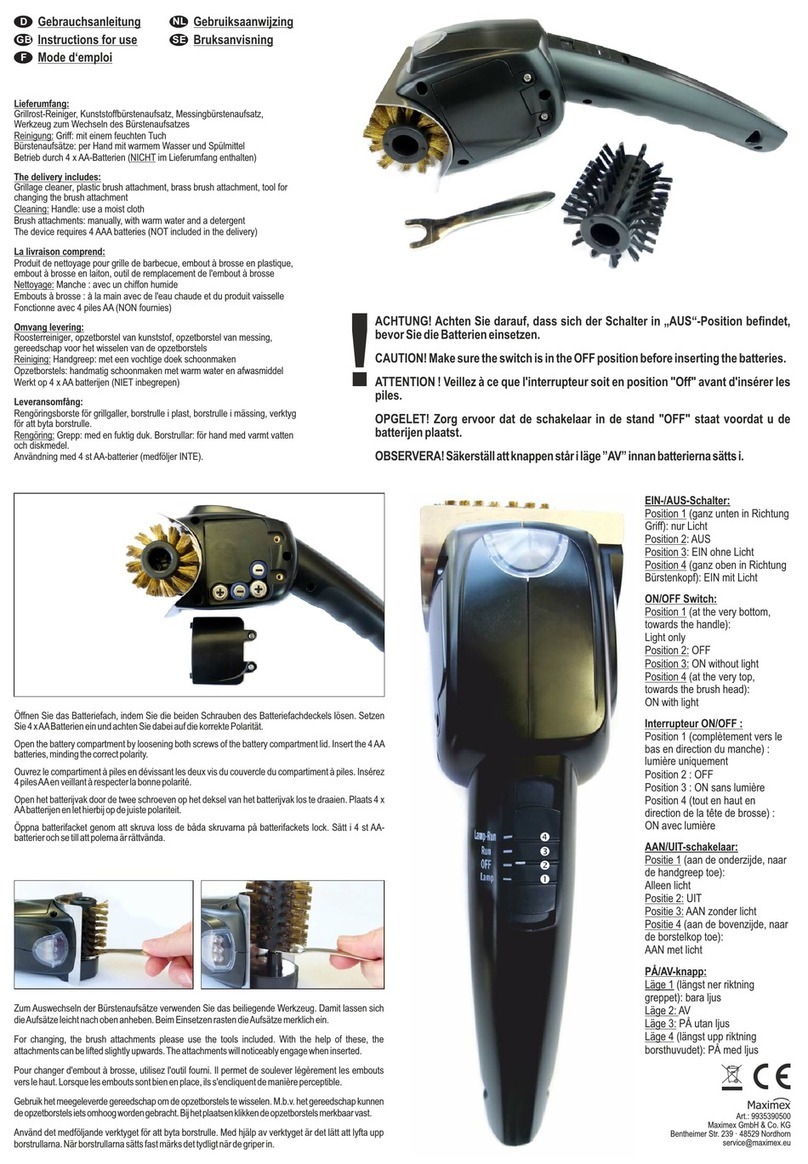Fueltec 955SS User manual

1
Model 955SS
Mobile Fuel Polishing &Tank
Cleaning System
Fueltec Systems LLC 800-511-4918
www.fueltecsystems.com

2
Model 955SS
Diesel Fuel Polishing & Tank Cleaning System
Quality First
SYSTEM INCLUDES:
(6) 1-Micron Parculate Filters (#241004)
(1) 5-Micron Water Separang Coalescer/Filter
(#241024)
(1) 4 OZ Fuel Sampler (#100013)
(1) 12′ x 1-1/2” Supply Hose (#100154)
(1) 12′ x 1” Return Hose (#100502)
(1)Stainless Steel/Teon Separator Cartridge (#241035)
(1) Quick-Disconnect Right Angle Fluid Pickup Tube 40” w/
Fueltec’s BIO-VAC Nozzle
Fueltec Systems LLC 800-511-4918

3
Model 955SS Mobile 2100 GPH Fuel Polishing &Tank Cleaning System
This pneumatic system is designed to safely purify fluids including gasoline, diesel. hydraulic, motor oils, and
jet fuel to meet or exceed the latest engine manufacturer’s cleanliness specifications. Free and emulsified
water can be removed to less than 50 PPM. Particulate matter is removed to one micron.
In use worldwide on:
• Marine– marina storage tanks, gasoline & diesel boats, including US Coast Guard at Guantanamo, Cuba
• Critical Power– Hospital and Data Center generator day tanks and large storage tanks
• Retail Fueling– C-Stores and Truck Stops underground diesel & gasoline storage tanks
• Fleet & Construction Equipment fuel tanks
• Remediation of phase separated ethanol blended fuels
• Aviation Fuel Storage Tanks– Avgas and Jet-A
• Industrial– Hydraulic and lube oils
TECHNICAL SPECIFICATIONS
Chassis Construcon Steel and Aluminum Brite Tread
Filter Housings Stainless Steel
Maximum li 22 feet
Working pressure fuel max. 60 PSI
Pump rated ow rate range 0 –1200 Gallons per hour *
Water Trap two (2) Gallons US
Compressed Air Required: 60 psi at 10-25 CFM
Width: 32” Depth: 47” Overall Height 60”
Pump 1” Air Operated Diaphragm
Inlets/Outlets 1-1/2” Cam-Loc w/ Ball Valves
Hose Supply 1-1/2” x 12’ Return 1” X 12’ each
Vacuum Gauge 2” liquid lled
Sludge Filters 24” Fueltec Bag
Water Coalescer/Separator Fueltec
Water Separator Fueltec
Air Regulator 3/8”
* Flow rates may vary with compressed air supply, lter type and condion, length and size of hoses, and size
and shape of uid pickup and return tubes.
Includes:
(6) 1-Micron Parculate Filters (#241004) • (1) 5-Micron Water Separang Coalescer/Filter(#241023) • (1) 4
OZ Fuel Sampler (#100013) • 12′ x 1” Supply Hose (#100502) • 12′ x 1” Return Hose (#100502) • (1) Stainless
Steel/Teon Separator Cartridge (#241033) • Quick-Disconnect Right Angle Fluid Pickup Tube 1” x 40” with a
BIO-VAC Nozzel(#100191) • Chassis Ground Cable Reel (#100192) •

4
Fueltec Model 955SS 35 GPM / 2100 GPH System for Gasoline & Diesel
• In operation the system pulls fluid from the fuel tank bottom by a vacuum created by the fuel pump.
• A bag type filter is first to remove rust, sludge, and solid contaminates from the tank bottom fluid which
may also contain water.
• The fuel/water mix leaves the fuel pump under pressure and is forced through a filter/ coalescer where
the tiny water droplets are made larger and separate from the fuel. This type of water separator is
commonly used on aircraft jet fuel.
• The Teflon separator prevents the water droplets from traveling with the fuel. The water falls to the
bottom of the water trap.
• A clear sight tube allows you to see the level of the water that has been separated.
• With the system running; you can open a valve and send the water to a waste container and the clean
fuel back to the fuel storage tank.
• The water level in the sight tube stops rising when all of the water has been vacuumed and separated
from the fuel storage tank.
• You can separate and remove one ounce or 1,000 gallons without stopping the system.
Fueltec’s Quality First:
• Stainless steel filter housings to resist the acids found in today's diesel and ethanol
blended gasoline.
• Filtration down to one micron, water removal to less than 100 parts per million.
• Meets engine manufacturers clean fuel requirements.
• Air operated diaphragm fuel pump intrinsically safe for all fuels.
• Static grounding reel for safety in class one areas
• Variable speed control to avoid phase separation or emulsification
The 955SS System has three modes of operation:
1. Bulk Fluid Transfer without Water Separation or Filtration is used when several inches of wa-
ter are measured on the tank bottom. This water can be pumped directly into a container without
wasting filters or having to empty the Separator water trap.
2. Fuel/Water Separation and Filtration mode is used to separate the remaining water and filter the
fuel after the bulk water has been removed.
3. Filtration without Water Separation can be done at a higher flow rate than with water separa-
tion. At 60 psi a sludge buster nozzle will loosen tank bottom sludge then the particulates in suspen-
sion are collected in the bag filter. (see page three)

5
SUCTION HOSE
RETURN TO TANK HOSE
FUEL TANK BOTTOM
SL
CLEAN DRY FUEL RETURNING TO TANK
THROUGH JET NOZZLE
SUCTION INTAKE ON
TANK BOTTOM
SLUDGE BUSTER
OPERATION WITH JET
NOZZLE AT 60 PSI
Table of contents


